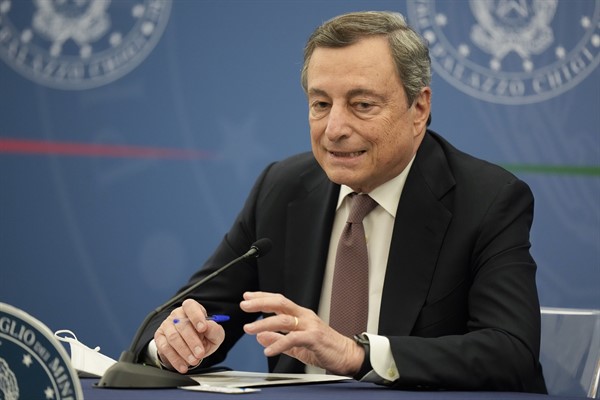When the leaders of the G-20’s member states convene for their Oct. 30-31 summit in Rome, there will be no time for fiddling. The planet is on fire. The pandemic smolders on. And the global recovery is faltering. The G-20 was created for just such a moment and just such challenges. To meet them, the assembled heads of governments must make credible commitments to accelerate decarbonization, expand vaccine access and alleviate developing nations’ crushing burden of debt.
The G-20 was born out of crisis—or crises, to be exact. It first emerged in 1999 as an informal network of finance ministers and central bank governors, in the wake of the Asian financial crisis. Nine years later, with the global economy teetering, then-U.S. President George W. Bush invited the G-20 heads of state and government to Washington for an emergency summit, during the waning days of his administration. By elevating the forum to the leaders’ level, he conceded that the Western market democracies—working through the smaller G-7 grouping—could no longer manage the world economy on their own. They needed the resources and will of emerging economies. The G-20 acted decisively, mobilizing massive liquidity, breathing new life into the Bretton Woods institutions and preventing the Great Recession from becoming another Great Depression. By autumn 2009, the G-20 had declared itself the “premier body for global economic coordination.”
The G-20’s champions hoped that it might smoothly evolve from a crisis committee to a standing steering body for the global economy, capable of catalyzing collective action and advancing governance reform in international organizations. These expectations were often dashed. The group’s agenda expanded, but its heterogeneous members struggled to achieve consensus even on bread-and-butter macroeconomic and financial matters. Rising geopolitical tensions, especially between the United States and China, complicated cooperation—even during emergencies. The G-20’s shortcomings were exposed in the early days of COVID-19. Rather than acting in unison, its members adopted uncoordinated national policies, a tendency exacerbated by the vacuum of U.S. global leadership under former President Donald Trump.

